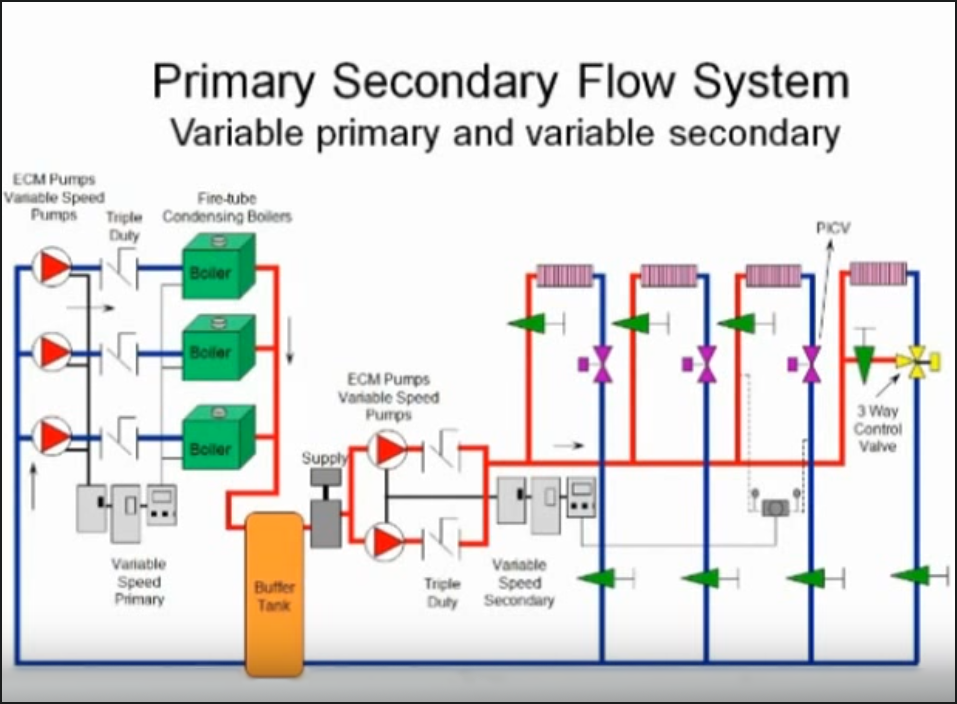Domestic Hot Water Recirculation Part 1: What’s The Point?
/How to Avoid Legionella Outbreaks in Domestic Hot Water Systems
/Understanding Primary Secondary Pumping Part 6: 5 Ways to Pump an HVAC System
/By Chris Edmondson
There’s more than one way to pump a chiller or boiler system. In fact, there are five common approaches, and all but one includes some variation of our topic of late -- primary secondary pumping.
Variable Primary Pumping
Contemporary systems that do not utilize primary secondary pumping are typically known as variable primary systems. In this simple design, there is only one set of pumps (chiller or boiler pumps) creating flow for the entire system.
Understanding Primary Secondary Pumping Part 5: Best Practices for Piping
/By Chris Edmondson
Piping in a primary secondary pumping systems as a whole can be quite complex, but when it comes to the “primary” part of the system, there are really only two approaches: Dedicated or Non-dedicated.
Figure 1 shows the chillers in a primary secondary system piped with one pump per chiller. If the chillers


